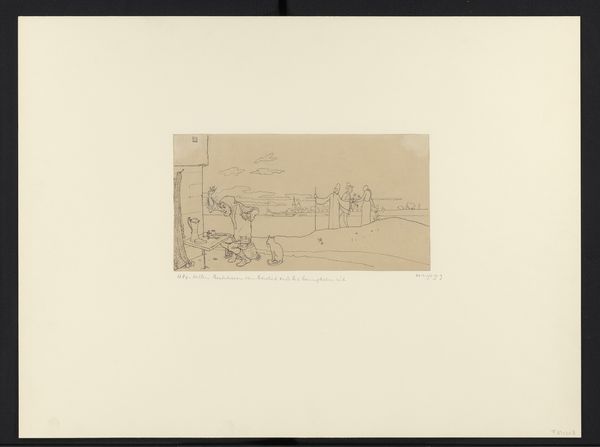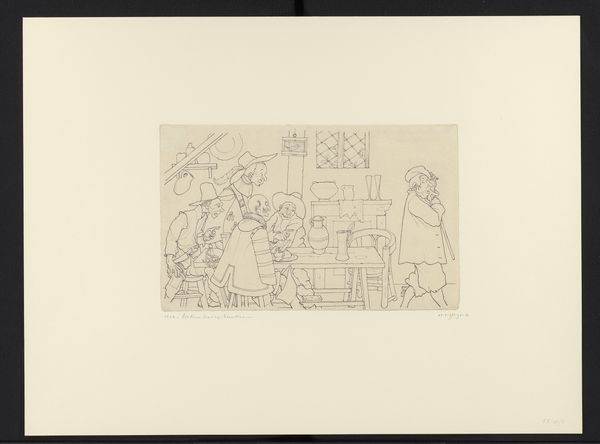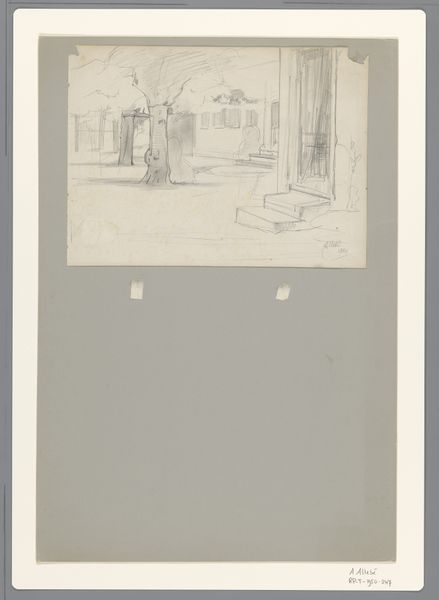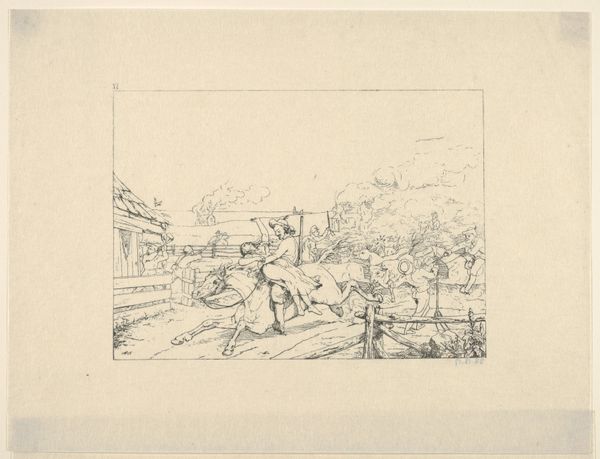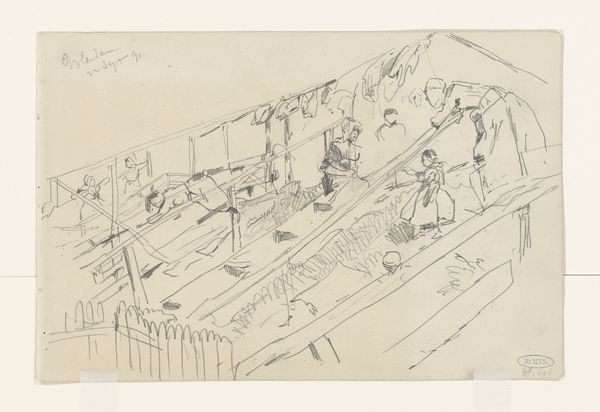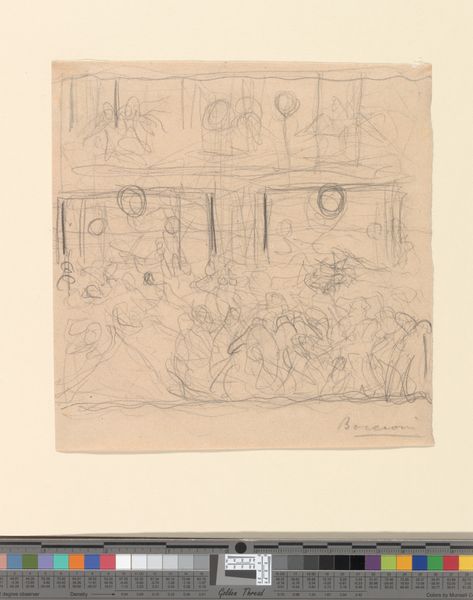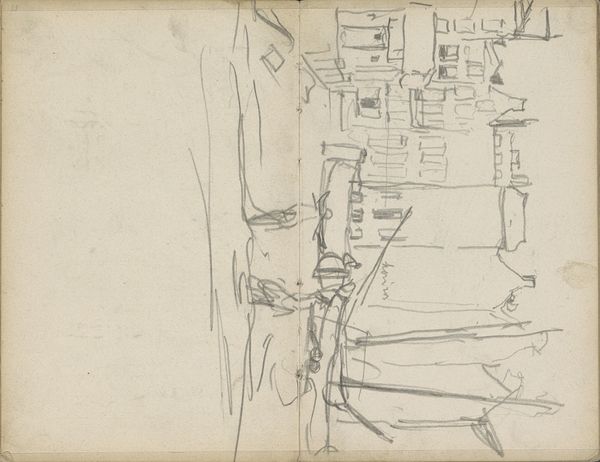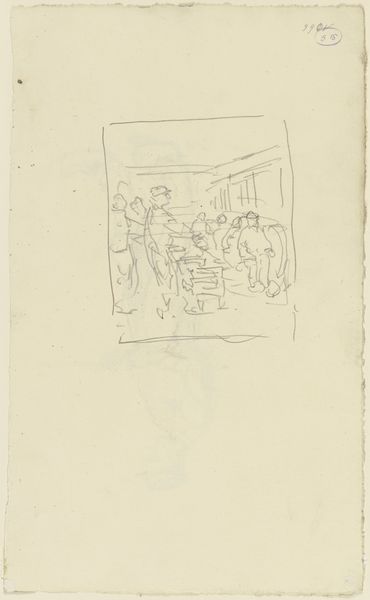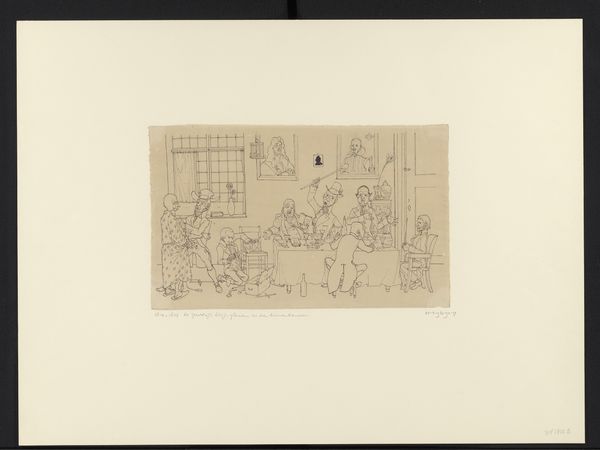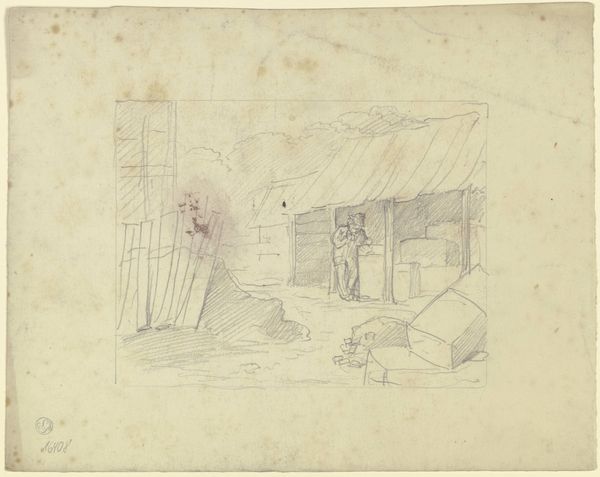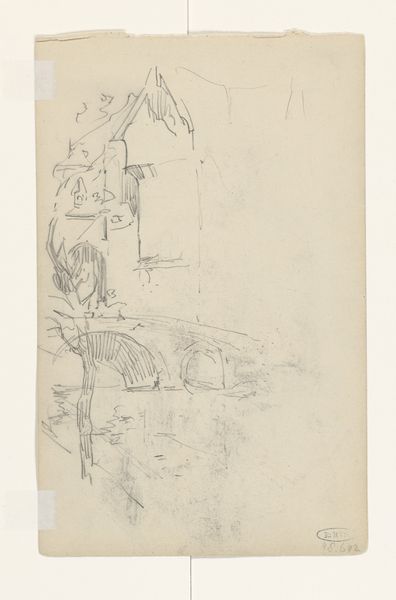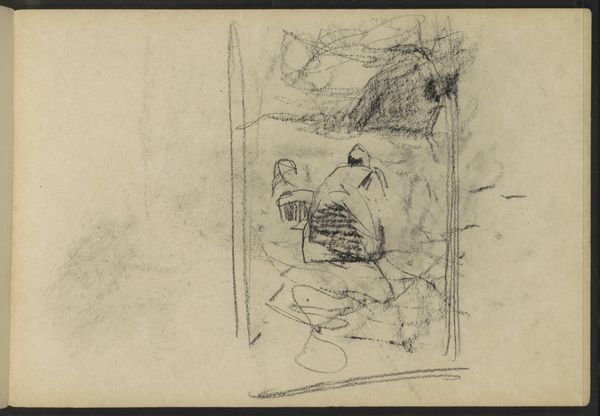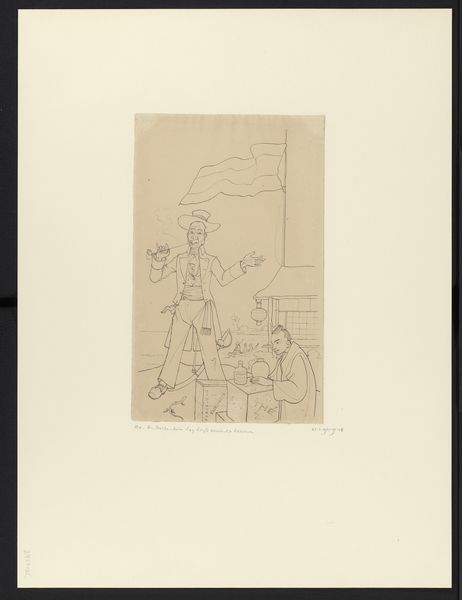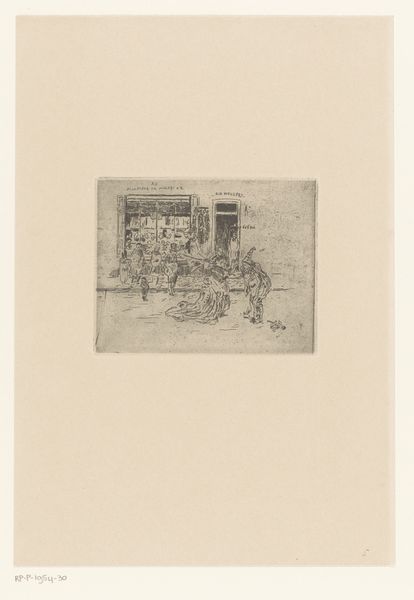
drawing, ink, pen
#
drawing
#
linocut
#
landscape
#
ink
#
linocut print
#
pen
#
genre-painting
#
realism
#
sea
Dimensions: height 210 mm, width 342 mm
Copyright: Rijks Museum: Open Domain
Curator: Johan Huizinga's "1170 / Zeevisch gevangen voor Utrecht," created between 1893 and 1895. It's rendered in ink and pen, primarily as a drawing. Editor: There’s something almost childlike in its simplicity, a directness of line. It reads immediately as an observational sketch, capturing a slice of everyday life and labor. Curator: Yes, and look how deliberately Huizinga uses line to depict social strata – those actively hauling the catch compared to those observing from the walls. It's a careful visual encoding of class dynamics. The symbolism, though subtle, implies societal hierarchy. Editor: The medium underscores that. Pen and ink sketches often functioned as preparatory studies for larger, more ‘serious’ artworks. This piece embraces the provisional nature of that format. It's unpretentious and offers a kind of raw immediacy in its making, prioritizing observation over meticulous finish. Curator: Indeed, and this very lack of "finish" gives it a unique power. Note, also, the somewhat awkward scaling and proportions—almost dreamlike. The architecture could represent more than just a physical wall. Perhaps barriers, boundaries, historical memory all intertwined. Editor: I see what you mean, particularly in how he positions the figures along that low wall. There's almost a theater staging to the scene, which puts labor and spectatorship directly under our own gaze. The act of observing itself becomes part of the subject. Curator: I find myself focusing on that central group drawing up the fish. What toil is involved in securing these resources, the weight of dependence upon their bounty? Editor: And the texture of the fishing nets or lines rendered with those very fine, almost frenetic marks, draws my attention to the specific tools involved, thinking of the production of these, perhaps by the women. Curator: A somber piece of memory made tangible, reminding us that societal structures are both visible and deeply embedded in our cultural imagination. Editor: Yes. This piece leaves me wondering what further investigation of material processes can reveal regarding social conditions beyond a simplistic dichotomy of work and idleness.
Comments
No comments
Be the first to comment and join the conversation on the ultimate creative platform.
